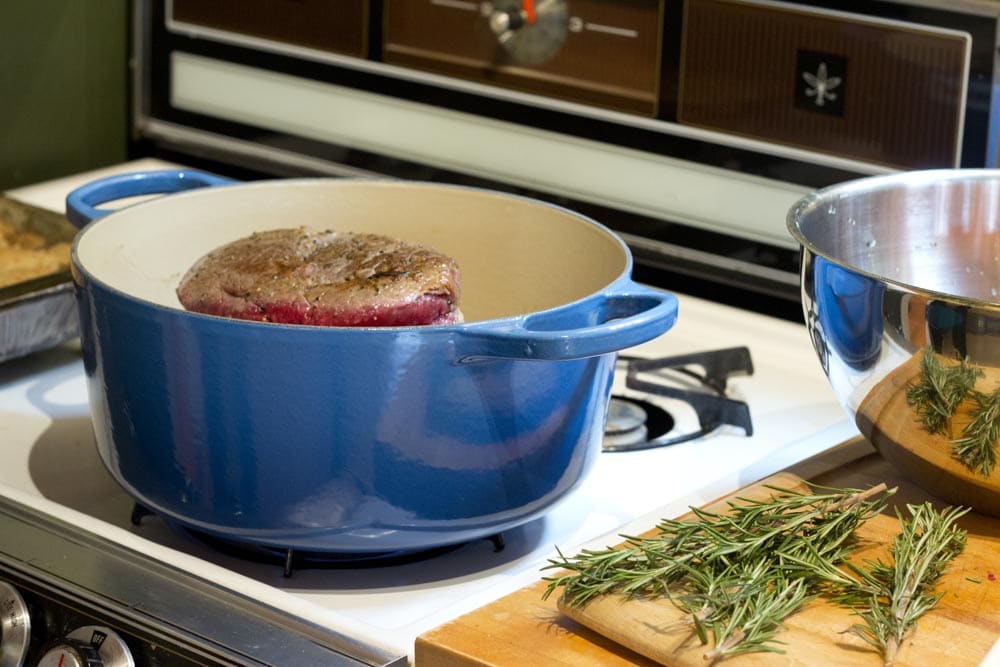A Dutch oven is a form of cookware made with a thick-walled casserole partnered with a tight-fitting lid. Usually, Dutch ovens are made with pure cast iron. But nowadays, they can be found made with ceramic and enameled aluminum.
After your dinner has been served, you may put your cookware inside the fridge. Hours later, you’ve decided whether you want to reheat your food while the cookware is still cold. Cast-iron may be an extreme heat-resisting material. All materials that undergo thermal shock can lead to unwanted damage to your precious cookware.
Can You Heat A Cold Dutch Oven?
As all cast-iron cookware does, a Dutch oven can also be a dependable piece of equipment for your kitchen. After stir-frying your food to perfection, you may place your already heated Dutch oven inside an oven to completely cook your meal. However, will this method still work if you put it in a cold Dutch oven?
The answer is yes, you can still heat a cold Dutch oven—but it should be done slowly. This means that you should not directly place your cold cookware towards the direct heat. Sudden temperature changes can cause thermal shock, a phenomenon common on metals and ceramics where the molecules expand sporadically—causing an opening for your equipment to shatter and break.
Once you’ve placed a “fresh from the fridge” cookware on a heated surface, this will cause a sudden temperature rise. Cast-iron molecules that are originally tied up will run away from the heated source—producing curvatures to your cookware.
The best way to preheat your food in a fridge is to allow the material to cool naturally. Place the cold Dutch oven at room temperatures until it doesn’t have a “stinging cold” sensation when you poke your finger.
Instead of rapidly increasing the cookware’s temperature, slowly open your stove range’s heat until it turns low. As soon as the cold marks disappear, you can begin increasing the stove’s temperature.
Can Le Creuset Go from Fridge to Stove Top?
Le Creuset is known for its high-quality cast-iron cookware that can withstand elements that can disrupt cookware. When it comes to temperature control, a cold Le Creuset can be placed from the stovetop. However, the equipment must be cooled down enough under room temperatures.
This is done to prevent thermal shock, which can cause your precious Le Creuset cookware to expand until it forms uneven gaps. These gaps will form bumps, cracks, and fissures to your cookware—which may soon break it.
Contrary to popular belief, thermal shock can only occur when heated objects (like used skillet pans) are placed in cold temperatures. In reality, this method can also work when cold cookware (like a Le Creuset cookware placed on the fridge) is suddenly heated on a stovetop.
Thermal shock occurs when there’s a sudden temperature change—whether it is increasing temperature or vice-versa. The decompression of molecules found on metals and ceramics will disrupt the structural integrity of your cookware.
To prevent this from happening, let the cookware cool down before placing it on the stovetop. You should also slowly increase your temperature that may expand your cookware unwantedly. Thaw your chilled cookware for 10-15 minutes before heating it to your stove range.
Picture from Didriks

